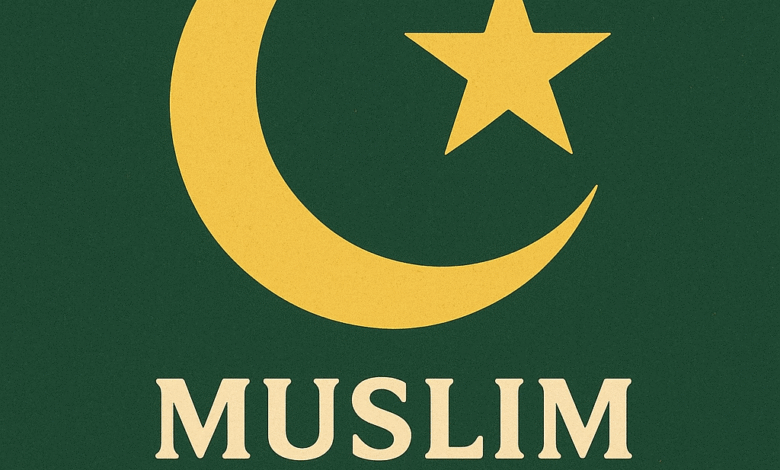Understanding the Muslim Symbol: Meaning, History, and Cultural Significance

Symbols have always played an important role in human civilization. They represent identity, beliefs, and values. When it comes to Islam, a faith followed by over a billion people worldwide, symbols take on both religious and cultural meaning. One commonly recognized Muslim symbol is the Crescent Moon and Star, but the story doesn’t end there. Let’s explore the world of Islamic symbols in depth — from history and meaning to cultural usage and misconceptions.
The Crescent Moon and Star: Origin and Association with Islam
The crescent moon and star is perhaps the most widely recognized symbol associated with Islam, but its origins aren’t strictly Islamic.
Historical Background
Historically, the crescent moon and star were used long before the advent of Islam. These symbols were prominent in ancient civilizations like the Byzantines, Greeks, and even earlier in Mesopotamia. The crescent moon was often linked with lunar deities and fertility gods. The combination of the moon and star wasn’t inherently religious — it was more astrological and cultural.
Adoption in the Islamic World
After the rise of the Ottoman Empire, which ruled much of the Muslim world for centuries, the crescent and star became more associated with Islamic governance. The Ottomans placed it on flags and mosques, and over time, it became a de facto emblem of Islamic identity — not because of religious command, but due to its political and cultural use.
Today, countries with Muslim majorities like Turkey, Pakistan, and Algeria incorporate the crescent and star in their national flags, reinforcing this association.
Is It an Official Religious Symbol?
Here’s the catch: the crescent and star are not found in the Qur’an or Hadith as symbols that Muslims must adopt. Islam, unlike some other religions, doesn’t have a universally endorsed symbol. The use of the crescent and star is more cultural and historical than religious. However, because of its widespread visibility, many people — both Muslims and non-Muslims — have come to associate it directly with the faith.
Arabic Calligraphy and the Word “Allah” as a Sacred Symbol
One of the most spiritually significant “symbols” in Islam isn’t an image — it’s a word: “Allah” (الله). In Islam, visual art often comes through Arabic calligraphy, which is both an artistic and symbolic representation of the divine.
Importance of the Word “Allah”
For Muslims, “Allah” is the Arabic word for God. It’s not a name like “Zeus” or “Thor,” but a designation for the singular, all-powerful creator. In Islamic belief, Allah is unique, without partners, and beyond human comprehension. That’s why this word holds immense spiritual significance and is often stylized in beautiful calligraphic forms.
Calligraphy as a Symbol of Faith
Because Islam discourages idolatry and avoids human or animal depictions in religious contexts, calligraphy became the core of Islamic art. You’ll find calligraphy in mosques, on walls, in Qur’anic manuscripts, and even in jewelry and home decor. Phrases like “Bismillah” (In the name of God) or “La ilaha illallah” (There is no god but Allah) are revered expressions of faith and often rendered artistically.
This stylized script functions almost like a symbolic language — conveying both the literal word and a deep spiritual resonance. For many Muslims, these words act like protective charms and reminders of God’s presence.
Not Just Aesthetics: Emotional and Religious Weight
The emotional and religious weight of these calligraphic forms cannot be overstated. They’re not just designs — they’re sacred. Tearing, disrespecting, or desecrating calligraphy that contains the word “Allah” or verses from the Qur’an is considered deeply offensive and blasphemous. So, while Arabic script may seem like just beautiful writing to some, to Muslims, it’s a powerful spiritual symbol.
Other Important Islamic Symbols and Motifs
While the crescent and calligraphy are the most recognized, there are other symbolic elements deeply tied to Islamic tradition and culture.
The Kaaba: Spiritual and Symbolic Center
The Kaaba, located in Mecca, Saudi Arabia, is a cube-shaped building that represents the spiritual heart of Islam. Muslims face toward the Kaaba during prayer (Salah), and it is the central point during the Hajj pilgrimage. Though not a symbol in the traditional sense like a cross or a star, the Kaaba holds enormous symbolic meaning as a unifying direction (qibla) for all Muslims.
Many Muslims keep images or miniature models of the Kaaba in their homes, not as idols, but as spiritual reminders of unity and submission to God. The Kaaba symbolizes equality, surrender to God, and the centrality of faith in a Muslim’s life.
The Shahada (Declaration of Faith)
The Shahada, or Islamic declaration of faith — “There is no god but Allah, and Muhammad is His messenger” — is another symbolic representation of Muslim belief. This phrase is central to Islamic identity and is found on flags, buildings, and inscriptions.
The Shahada is more than just words. It represents a Muslim’s ultimate loyalty and belief, a declaration that they belong to the monotheistic tradition of Islam. Visually, it is often rendered in calligraphy and used symbolically, much like the way Christians use the cross.
The Color Green
While not a shape or emblem, the color green has a strong symbolic presence in Islam. It’s believed to have been the Prophet Muhammad’s favorite color, and it appears often in Islamic art, architecture, and flags.
Green represents paradise, life, and renewal — themes deeply embedded in Islamic teachings. You’ll find it in mosque domes, Qur’anic covers, and decorative banners during Islamic celebrations.
Misconceptions About Muslim Symbols
In today’s media-driven world, symbols can often be misunderstood or misused. Muslim symbols are no exception. Let’s debunk a few common misconceptions.
The Crescent and Star Are Not “Mandatory”
As mentioned earlier, there is no official Islamic directive that instructs Muslims to use the crescent moon and star. It’s not like the cross in Christianity. In fact, some Muslims reject it altogether, considering it a pre-Islamic or even pagan symbol. Others embrace it as part of cultural heritage. The variation in opinion reflects the diversity within the Muslim world.
Not All Arabic Text Is Automatically Islamic
Arabic is a language spoken by millions of people, not all of whom are Muslim. Sometimes people mistake any Arabic script as “Islamic,” which can be problematic. A design might include poetry, personal names, or even completely secular text — yet it’s misinterpreted simply because it’s in Arabic.
Misuse in Pop Culture and Fashion
In recent years, Islamic symbols — particularly Arabic calligraphy — have shown up in Western fashion, tattoos, or décor. While some of this comes from admiration, there’s a fine line between appreciation and appropriation. For example, using sacred phrases like the Shahada or the name of Allah on a handbag or tattoo can deeply offend practicing Muslims. It’s important to understand the weight these symbols carry before adopting them casually.
Conclusion: Symbols That Reflect Faith, Not Define It
Islam, at its core, is a religion focused on belief, practice, and inner submission to God. While symbols like the crescent moon, Arabic calligraphy, and the Kaaba have become visual representations of the faith, they do not define it. Unlike some other traditions, Islam doesn’t require a physical symbol for spiritual identity — the true essence lies in the heart, in actions, and in intention.
That said, the various symbols associated with Islam serve as powerful cultural, spiritual, and emotional connectors. They help believers feel united across continents, they represent shared history, and they inspire devotion. Whether it’s the graceful swirl of Arabic script or the simple crescent on a flag, these symbols carry meaning — not because they’re mandated, but because they’ve been embraced with respect and reverence over time.



